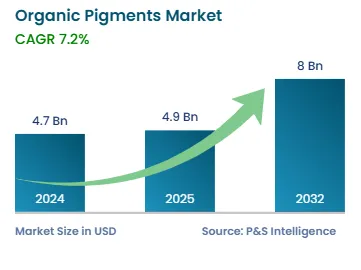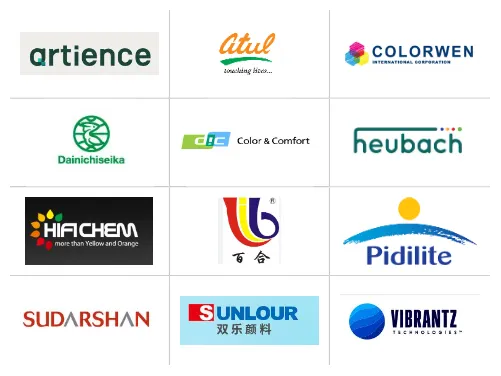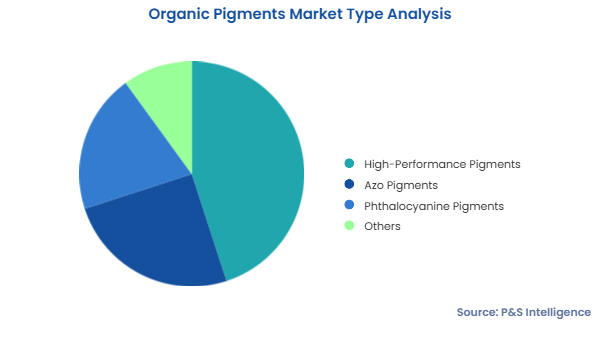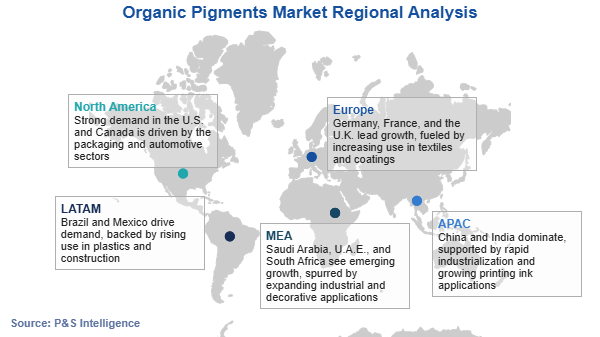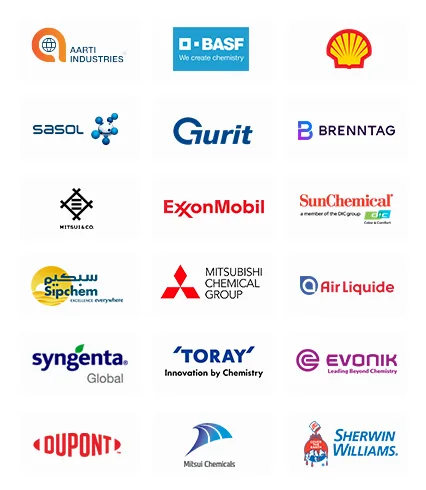Organic Pigments Market Future Prospects
The organic pigments market value is estimated to rise from USD 4.7 billion in 2024 to USD 8.0 billion in 2032 at a CAGR of 7.2% from 2025 to 2032.
These chemicals have diverse applications across various industries, including paints & coatings, printing inks, plastics, and textiles. The rising population and its increasing disposable income, expanding infrastructure with the growth in construction activities, flourishing end-use industries supported by various favorable government initiatives and policies, and rising consumer consciousness to use naturally obtained pigments boost the industry advance across the globe.
The textile industry in developing countries, including Bangladesh, Myanmar, and Vietnam, imports a huge volume of organic pigments. The availability of inexpensive raw materials and cheap laborers attracts multinational textile companies and brands to establish their units in these countries. These countries offer them a huge growth potential by assisting in reducing the operational cost, hence propelling textile production.
Owing to their enhanced quality, brightness, and strength, organic pigments are becoming popular in the textile industry. Further, because natural or low-impact pigments cut down significantly on water pollution and toxic chemical waste, they lessen the environmental impact linked with textile dyeing. The sustainability approach in the textile sector combines using plant-based dyes, non-toxic pigments, and innovative dyeing processes focused on waste and water and electricity consumption reduction.
Moreover, since they improve the appearance of the end product, their usage is expanding in the animal feed & nutrition and food & beverage industries.
